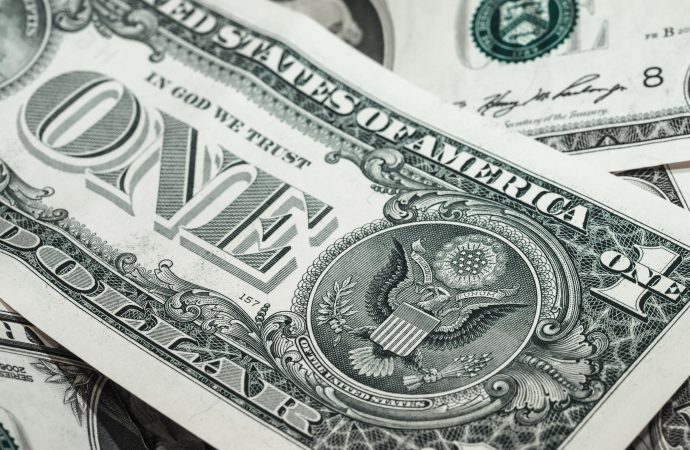Have you ever wondered what it would be like to live in a country where people don’t trust their own currency? That’s the reality for many Bolivians today, as they grapple with an ongoing crisis of confidence in the boliviano. From skyrocketing prices to a shortage of basic goods, daily life is being upended by
Have you ever wondered what it would be like to live in a country where people don’t trust their own currency? That’s the reality for many Bolivians today, as they grapple with an ongoing crisis of confidence in the boliviano. From skyrocketing prices to a shortage of basic goods, daily life is being upended by this “dollar dilemma.” But how did Bolivia get here, and what does it mean for its future? In this blog post, we’ll explore the roots of this economic challenge and examine some potential solutions that could help restore faith in local money. Join us on this journey through one of South America’s most complex financial landscapes!
Bolivia’s currency crisis
Bolivia is currently facing a currency crisis, with its currency, the boliviano, losing value against the US dollar. This has caused prices for imported goods to skyrocket, and has made it difficult for Bolivians to save money or send money abroad.
The boliviano has been in decline since 2014, when the price of oil, Bolivia’s main export, began to fall. The country has been unable to adjust its spending in line with falling revenues, and this has led to a growing deficit. Inflation has also been a problem, with the boliviano losing around half of its value against the dollar since 2014.
The currency crisis has had a major impact on daily life in Bolivia. Prices for basic goods have soared, and many Bolivians are struggling to make ends meet. The situation is particularly difficult for those who rely on imported goods, such as medicine.
The government has attempted to address the crisis by introducing price controls on some goods and services, but these have been largely unsuccessful. There have also been calls for the government to devalue the boliviano, but so far this has not been done.
It is unclear how the currency crisis will be resolved, but it is clear that it is having a major impact on the lives of ordinary Bolivians.
How the currency crisis is affecting daily life in Bolivia
Bolivia’s currency crisis is affecting daily life in a number of ways. First, the value of the Bolivian boliviano has declined sharply against the US dollar, making imported goods more expensive. This has led to inflation, which has eroded the purchasing power of Bolivians. Second, the government has imposed strict controls on the purchase of US dollars, making it difficult for Bolivians to obtain foreign currency. This has led to a shortage of essential goods, as many companies cannot afford to import them. Third, the currency crisis has caused a decrease in tourist arrivals, as foreigners are deterred by the high cost of travel and the difficulty of obtaining US dollars. This has had a negative impact on the economy, as tourism is one of Bolivia’s main sources of revenue. Finally, the currency crisis has led to social unrest, as demonstrators have taken to the streets to protest against the government’s handling of the situation.
What the government is doing to address the crisis
In recent months, the Bolivian government has been taking steps to address the country’s currency crisis. In March, the government announced a series of measures intended to stabilize the economy and shore up the boliviano. These included increasing reserve requirements for banks, enacting a tax on financial transactions, and issuing bonds denominated in U.S. dollars.
The government has also been working to increase confidence in the boliviano by tying its value to a basket of currencies, including the U.S. dollar and the euro. In addition, the Central Bank of Bolivia has been intervention in the foreign exchange market to prevent sharp fluctuations in the value of the boliviano.
While these measures have helped to stabilize the currency in recent months, it remains to be seen whether they will be sufficient to restore faith in the boliviano over the long term.
The long-term effects of the currency crisis
Bolivia’s currency crisis has been ongoing for several years, and its effects have been felt by many people in the country. The most obvious effect is the inflation of prices, which has made basic necessities much more expensive. This has led to an increase in poverty, as well as a decrease in the quality of life for many Bolivians.
The currency crisis has also had other, less visible effects. For example, it has made it difficult for Bolivian businesses to get loans from foreign banks. This has led to a decrease in investment and economic growth, and has made it harder for Bolivians to find work. In addition, the crisis has made it difficult for the government to provide basic services such as healthcare and education.
The long-term effects of the currency crisis are far-reaching and will continue to be felt by Bolivians for years to come. It is important that the government takes action to address the root causes of the crisis, so that Bolivia can begin to recover and rebuild its economy.
Conclusion
In conclusion, Bolivia’s dollar dilemma has been a long-standing issue for many years now, and it is yet to be solved. Not only does it cause economic instability in the country, but it also affects everyday life of Bolivians who struggle to make ends meet with their limited income. It is clear that something needs to be done about this problem in order for Bolivians to experience a better quality of life and greater financial stability. Hopefully with the help of government intervention or other measures, confidence can be restored in the local currency so that people can get back on their feet and start rebuilding their lives.





















Leave a Comment
Your email address will not be published. Required fields are marked with *